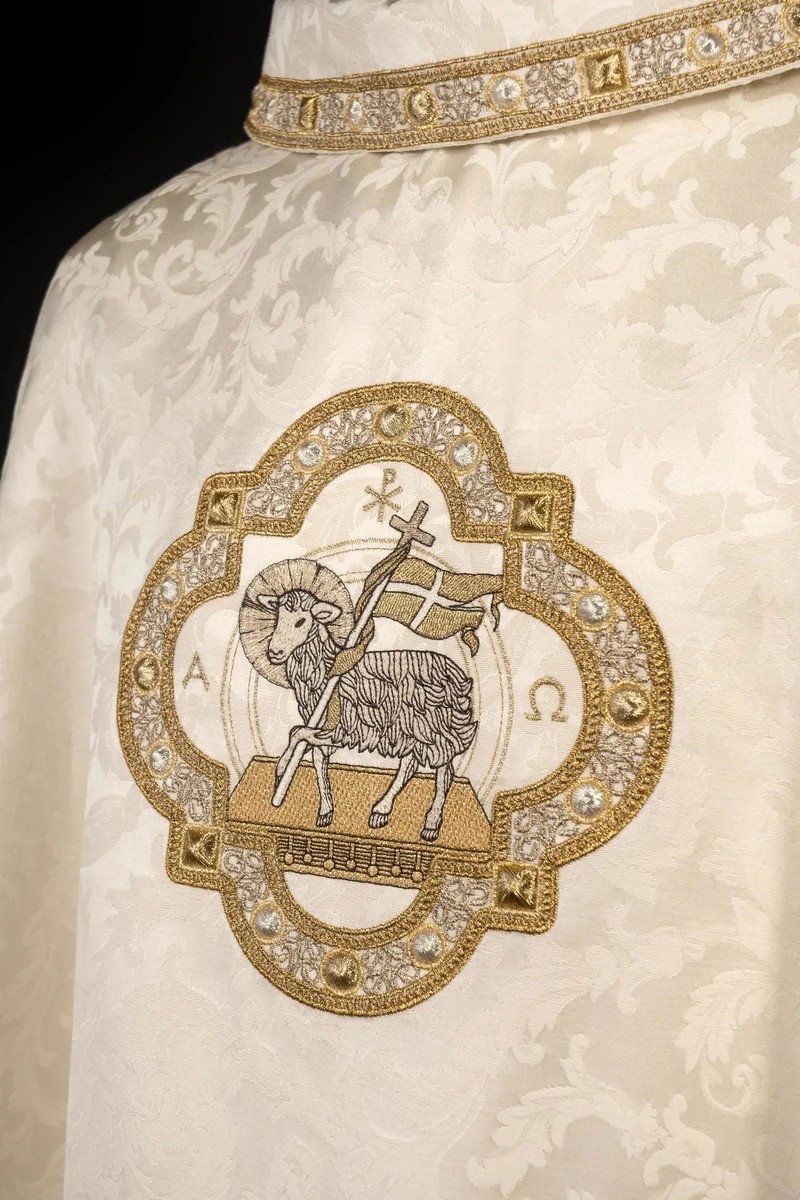
The Chalice in History: From Origins to the Present Day
The chalice, a sacred vessel destined to hold the consecrated wine during the Eucharistic celebration, plays a central role in Christian liturgy. Its history is rooted in ancient times, evolving over the centuries in both form and symbolic meaning.
The origins of the chalice can be traced back to the cups used during the Last Supper, the final meal shared by Jesus with his apostles before his crucifixion. Although the precise appearance of these cups is unknown, it is likely that they were simple objects made of common materials such as wood or terracotta.
In the early centuries of Christianity, chalices continued to be made of humble materials, reflecting the poverty and simplicity of the early Church. However, starting in the 4th century, with the spread of Christianity and the increase in the Church’s wealth, chalices began to be made of more precious materials such as silver and gold, often decorated with precious stones and enamels.
Throughout the Middle Ages, the chalice assumed an increasingly important role in the liturgy, becoming one of the most sacred and venerated objects. Its form evolved, enriched with ornamental and symbolic details. Many medieval chalices feature decorations depicting biblical scenes, saints, and Christian symbols.
During the Renaissance and the Baroque period, chalices became true artistic masterpieces, crafted by highly talented goldsmiths and artists. Their forms became more elaborate and opulent, reflecting the aesthetic taste of the era.
Today, chalices continue to be made in a variety of materials and styles, from simple metal to precious gold, from modern designs to traditional forms. Regardless of the material or style, the chalice remains a powerful symbol of the Christian faith and an essential element of the Eucharistic celebration.”
The Symbolism of the Chalice: A Sacred Vessel Rich in Meaning
Beyond its practical function of holding the consecrated wine, the chalice is an object rich in symbolic meanings. In Christian liturgy, the chalice represents several important aspects of the faith, including:
The Blood of Christ
The most important meaning of the chalice is its association with the Blood of Christ, shed for the redemption of humanity. During the consecration, the wine contained in the chalice transforms into the Blood of Christ, becoming a real and tangible presence of Jesus’ sacrifice.
The Eucharistic Sacrifice
The chalice is also a symbol of the Eucharistic sacrifice, the memorial of Jesus’ death and resurrection. Through the Eucharistic celebration, the faithful participate in Christ’s sacrifice and receive divine grace.
The Unity of Believers
The chalice represents the unity of believers in Christ. Just as the wine contained in the chalice is shared by all the faithful, so too are faith and divine grace shared by all members of the Church.
The Cup of Salvation
The chalice can be seen as the “cup of salvation,” a symbol of the hope and eternal life offered by Christ to those who believe in him.
Materials and Styles of Chalices: An Expression of Art and Faith
Over the centuries, chalices have been made in a variety of materials, each with its own characteristics and symbolic meaning. Some of the most common materials used for making chalices include:
Gold
Gold is considered the most precious and noble material for making chalices. Its brilliant color and resistance to corrosion make it an appropriate symbol of divinity and eternity.
Silver
Silver is another precious material commonly used for making chalices. Its shine and malleability make it suitable for creating finely decorated chalices.
Gilded Metal
Gilded metal is a more affordable alternative to gold, but it still offers an elegant and precious appearance.
Brass
Brass is a strong and durable material, often used for making chalices intended for frequent use.
Glass
Glass is a transparent and fragile material that can be used for making chalices with a modern and minimalist design.
In addition to the materials, chalices can vary considerably in style and decoration. Some chalices are simple and minimalist, while others are richly decorated with precious stones, enamels, and engravings. The most common styles of chalices include:
Romanesque Chalices
Characterized by simple and massive forms, with geometric and symbolic decorations.
Gothic Chalices
Characterized by more slender and decorated forms, with flying buttresses, spires, and sculpted figures.
Renaissance Chalices: Characterized by elegant and harmonious forms, with decorations inspired by classical art.
Baroque Chalices
Characterized by elaborate and opulent forms, with decorations rich in details and ornaments.
Modern Chalices
Characterized by simple and minimalist forms, with an innovative and contemporary design.
The Importance of the Chalice in the Liturgy: An Essential Element of the Eucharistic Celebration
The chalice is an essential element of the Eucharistic celebration, the culminating moment of the Christian liturgy. During Mass, the priest uses the chalice to consecrate the wine, which transforms into the Blood of Christ. The chalice is then offered to the faithful during Communion, allowing them to participate in Christ’s sacrifice and receive divine grace.
The use of the chalice in the liturgy is regulated by precise liturgical norms, which establish the appropriate material, form, and decoration for this sacred object. The chalice must be made of a noble and resistant material, capable of containing the consecrated wine safely and with dignity. Its form must be elegant and harmonious, reflecting the sacredness of its contents. The decoration of the chalice may vary depending on the liturgical style and local traditions, but it must always be respectful of its symbolic meaning.
The care and maintenance of the chalice are of great importance, as this sacred object must be treated with respect and veneration. The chalice must be cleaned and polished regularly, and stored in a safe and protected place. In case of damage or wear, the chalice must be repaired or replaced by a skilled artisan.
Purchasing a Chalice: Tips and Suggestions for a Conscious Choice
If you wish to purchase a chalice, it is important to make a conscious choice, taking into account several factors, including:
The Material: Choose a noble and resistant material, such as gold, silver, or gilded metal.
The Style: Choose a style that suits your personal taste and the liturgical traditions of your community.
The Quality: Purchase a chalice made by a skilled artisan, who guarantees the quality and durability of the product.
The Price: Compare the prices of different retailers, taking into account the quality and materials used.
The Dimensions: Choose a chalice of appropriate dimensions for liturgical use.
You can purchase chalices at stores specializing in religious articles, artisan workshops, and online. Before making a purchase, it is advisable to inquire about the retailer’s reputation and read customer reviews.
HaftinaUSA
Your Partner for Purchasing High-Quality Chalices and Liturgical Items
If you are looking for a high-quality chalice, crafted with care and attention to detail, we invite you to visit our website HaftinaUSA. We offer a wide range of chalices in various materials, styles, and sizes, suitable for all needs and tastes. Our chalices are made by skilled artisans, who use only the highest quality materials and traditional craftsmanship techniques. We are proud to offer our customers high-quality products that combine beauty, functionality, and symbolic meaning.
In addition to chalices, on HaftinaUSA you will also find a wide selection of other liturgical items, including sacred vestments, sacred furnishings, and devotional objects. We are your ideal partner for purchasing everything you need to celebrate the liturgy in a dignified and solemn manner.
Visit our website today and discover our offer! We are confident that you will find the perfect product for your needs.



